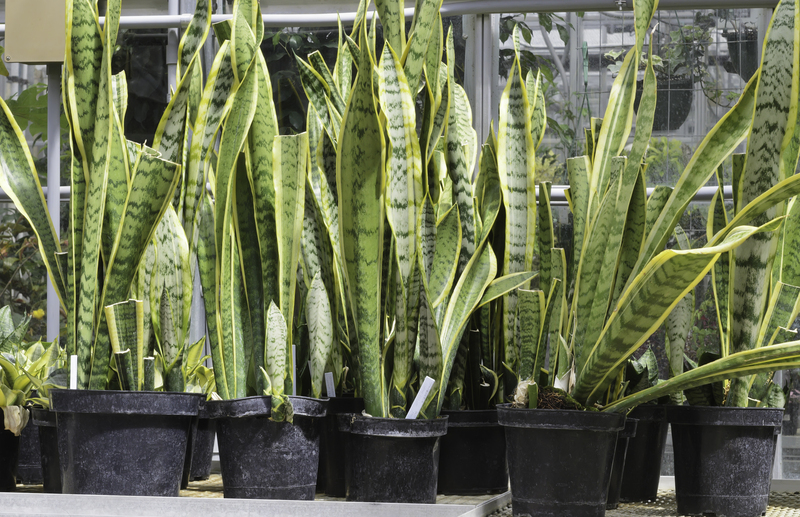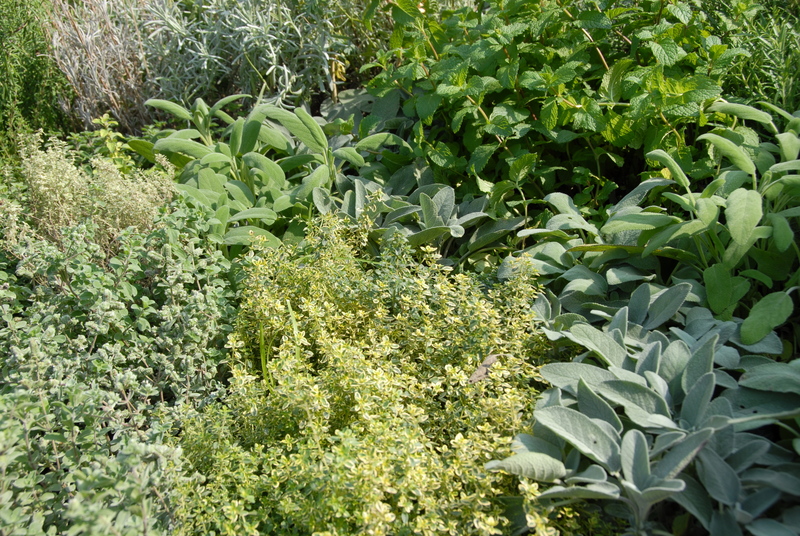Unleash your green thumb with a versatile herb garden
Posted on 29/06/2025
Unleash Your Green Thumb with a Versatile Herb Garden
There's something magical about the aroma and flavor of fresh herbs in your kitchen. Growing your own versatile herb garden is one of the most rewarding projects you can start, whether you are new to gardening or a seasoned pro. Picture plucking vibrant green basil for your homemade pesto, or snipping fresh rosemary for your roasted potatoes. Not only does cultivating an herb garden bring fresh flavors to your dishes, but it also soothes the mind, boosts your wellbeing, and enhances any living space with luscious greenery.
Below, we'll guide you through every step to unleash your green thumb and transform your space with a flourishing, adaptable herb garden. Whether you have a sprawling backyard or a sunny windowsill, you'll discover the secrets to creating a thriving oasis full of aromatic, culinary, and even medicinal herbs.

Why Start a Versatile Herb Garden?
Before you dive into the dirt, let's explore the unique benefits of keeping a versatile herb garden at home:
- Fresh Flavors All Year Round: Homegrown herbs taste far superior to store-bought ones, and you can harvest them as needed, reducing waste and saving money.
- Low-Maintenance Plants: Most herbs are sturdy and easy to grow, making them perfect for beginner and busy gardeners alike.
- Wellbeing and Relaxation: Gardening soothes the mind--tending to plants is proven to reduce stress and boost happiness.
- Multi-purpose Use: Aside from culinary delights, herbs can be used for teas, natural remedies, beauty routines, and even household cleaning.
- Eco-Friendly Choice: Reduce your carbon footprint by growing instead of buying; you'll also attract pollinators and support the environment.
- Decorative Appeal: Herb gardens can be beautifully designed in pots, planters, windowsills, or garden beds, adding lush green accents to your home.
If you want to experience the joys of gardening without the demands of a large vegetable patch, then a herb garden is the perfect entry point. It's compact, customizable, and endlessly creative.
Choosing the Right Herbs for Your Herb Garden
Your first step toward unleashing your green thumb is picking the right herbs for your area, light conditions, and culinary preferences. A versatile herb garden contains herbs that are easy to grow and serve multiple purposes in the kitchen and beyond.
The Best Culinary Herbs to Grow
- Basil: Essential for Italian dishes, salads, pestos, and even cocktails. Thrives in warm, sunny spots.
- Thyme: Hardy and fragrant, great for soups, roasts, and marinades. Can tolerate partial shade.
- Rosemary: Woody-stemmed and robust, perfect for meat dishes and bread. Prefers full sun.
- Parsley: Both curly and flat-leaf varieties are nutrient-rich and great for garnishes, salads, and sauces.
- Mint: Refreshing in teas, desserts, and salads. Multiple varieties exist--chocolate, spearmint, and peppermint. Best in containers as it spreads quickly.
- Cilantro (Coriander): Key herb for Mexican, Indian, and Middle Eastern cuisines. Enjoy leaves and seeds (coriander).
- Oregano: Staple for Mediterranean dishes, pizza, and sauces.
- Chives: Mild onion flavor--top soups, dips, and baked potatoes.
- Sage: Earthy aroma, pairs well with poultry, pasta, and butter sauces.
- Dill: Fresh, tangy taste for fish, pickles, and salads.
Herbs Beyond the Kitchen
- Lemon Balm: Calming and citrusy--excellent for herbal teas and relaxation tinctures.
- Lavender: Fragrant flowers for sachets, beauty products, and wellness teas.
- Chamomile: Gentle, apple-scented flowers ideal for soothing teas and compresses.
- Aloe Vera: Not a traditional herb, but perfect for healing burns and hydrating skin.
Pro Tip: Start with three to five herbs you use most often. As your confidence grows, expand your collection for maximum versatility!
Selecting the Perfect Location for Your Herb Garden
The location of your herb garden is crucial for lush, healthy growth. Herbs generally require:
- 6-8 hours of sunlight daily--West or south-facing windowsills are ideal for indoor gardens.
- Good drainage--Herbs dislike soggy soil; ensure your pots or beds allow excess water to escape.
- Protection from extreme temperatures--If you live in a hot climate, some afternoon shade will prevent wilting.
- Proximity to your kitchen--Make harvesting easy and encourage regular use by placing herbs nearby.
Indoor Herb Gardens
If you lack outdoor space, don't worry--a sunny windowsill, countertop, or balcony can support an impressive indoor herb oasis.
- Use individual pots for each herb or a long planter with natural dividers.
- Choose compact herbs like chives, basil, and parsley for confined spaces.
- Rotate pots occasionally for even sunlight exposure.
Outdoor Herb Gardens
With a backyard or patio, you have more freedom to grow larger herbs and experiment with layouts:
- Dedicate a garden bed, border, or raised planter to your herbs.
- Mix herbs with flowers and vegetables for an attractive, multifunctional garden.
- Plant aggressive spreaders like mint and lemon balm in pots to control their growth.
- Design a spiral or geometric herb garden for a stunning focal point.
How to Plant and Care for a Thriving Herb Garden
Once you've chosen your herbs and garden location, it's time to plant and nurture your green retreat:
Planting from Seeds vs. Seedlings
- Seeds: Budget-friendly and offer a greater variety, but require patience.
- Seedlings (starter plants): Provide a head start and are perfect for beginners or those wanting quick results.
Use high-quality potting soil rich in organic matter for both indoor and outdoor gardens. Fill planters or beds, leaving space for each plant to grow without crowding.
Watering Tips for Your Herb Garden
- Check soil moisture before watering: Stick your finger an inch into the soil; water if it feels dry.
- Avoid overwatering, which causes root rot. Most herbs prefer slightly dry conditions over soggy soil.
- Water at the base of the plant instead of from overhead to prevent mold and rot.
Fertilizing Tips
- Feed herbs lightly: Too much fertilizer can reduce flavor intensity; once per month with organic compost or balanced liquid fertilizer is usually enough.
- Avoid high-nitrogen formulas, which promote leaf growth at the expense of essential oils and aromas.
Pruning and Harvesting
Frequent harvesting encourages bushier, more productive plants. Use sharp scissors to snip off leaves and stems as needed.
- Pinch flower buds: Removing flowers directs more energy to leaf production, which is what you want for culinary herbs.
- Harvest regularly: Don't take more than one-third of the plant at a time to ensure continuous growth.
Creative Ideas to Design a Versatile Herb Garden
Designing your herb garden is where creativity shines! Here are inspiring ideas to make your garden stand out:
1. Herb Spiral Gardens
Create a spiral out of rocks or bricks, filling it with soil. Plant sun-loving herbs at the top and shade-tolerant ones lower down. Spirals maximize space and create beautiful visual interest.
2. Container and Vertical Herb Gardens
Short on ground space? Use a collection of pots, hanging baskets, or wall-mounted planters. Try repurposed pallets, pocket planters, or vertical towers for a modern look.
3. Kitchen Windowsill Herb Gardens
Small pots or a window box filled with basil, parsley, and thyme make a functional, decorative addition to the kitchen.
4. Themed Herb Gardens
- Pizza garden: Surround tomatoes with basil, oregano, and parsley.
- Tea garden: Blend peppermint, lemon balm, and chamomile for fresh brews.
- Pollinator-friendly herb garden: Mix lavender, oregano, and sage to attract bees and butterflies.
- Herb wreaths and living decor: Shape wire frames with rosemary or thyme for unique table centerpieces.
Maintaining and Troubleshooting Your Herb Garden
Common Challenges and How to Overcome Them
- Pests: Keep a lookout for aphids, whiteflies, or spider mites. Use neem oil or insecticidal soap for organic control.
- Diseases: Avoid overwatering to prevent fungal diseases. Ensure proper air circulation between plants.
- Bolting: When herbs like cilantro or basil flower prematurely in hot weather. Provide afternoon shade and harvest frequently.
- Poor flavor or slow growth: Herbs stressed by too much shade or poor soil may lose flavor. Move to sunnier spots and refresh soil yearly.
Tips for Year-Round Herb Gardening
- Bring potted herbs indoors before the first frost to extend the growing season.
- Use grow lights for extra light during winter months.
- Preserve excess herbs by drying, freezing, or making herb-infused oils and vinegars.

Clever Uses for Your Herb Harvest
- Fresh cooking: Sprinkle over salads, pasta, and grilled dishes to elevate flavor instantly.
- Herbal teas: Mint, chamomile, and lemon balm make delicious brews for relaxation.
- Home remedies: Soothe burns with aloe vera gel, or make calming balms from rosemary and lavender.
- Natural cleaning: Infuse vinegar with herbs for a DIY disinfectant spray.
- Crafts and decor: Dry herbs in bunches for wreaths, bouquets, or homemade sachets.
Explore the versatile world of herbs--your garden will become a hub of creativity and wellness!
Conclusion: Unleash Your Green Thumb Today!
Launching a versatile herb garden unlocks a world of flavor, health, sustainability, and joy. No matter the size of your home or yard, there's an herb garden setup that fits your lifestyle. With just a few simple steps--choosing the right herbs, picking the best spot, and giving a little care--you'll soon have a lush, vibrant oasis at your fingertips.
Now is the perfect time to unleash your green thumb and start your own herb garden adventure. Whether for culinary inspiration, home remedies, or pure enjoyment, your versatile herb garden will bring endless delight for years to come!
Happy planting! If you've enjoyed this guide, share it with fellow enthusiasts and inspire others to embrace the joys of homegrown herbs.

